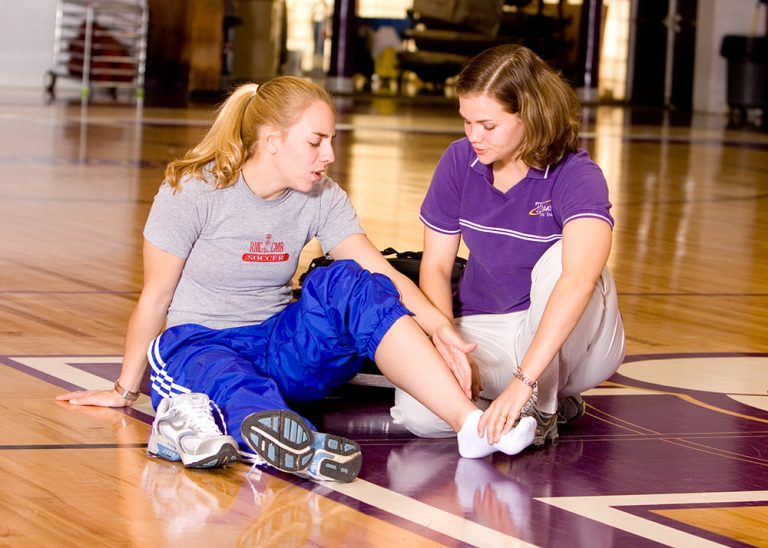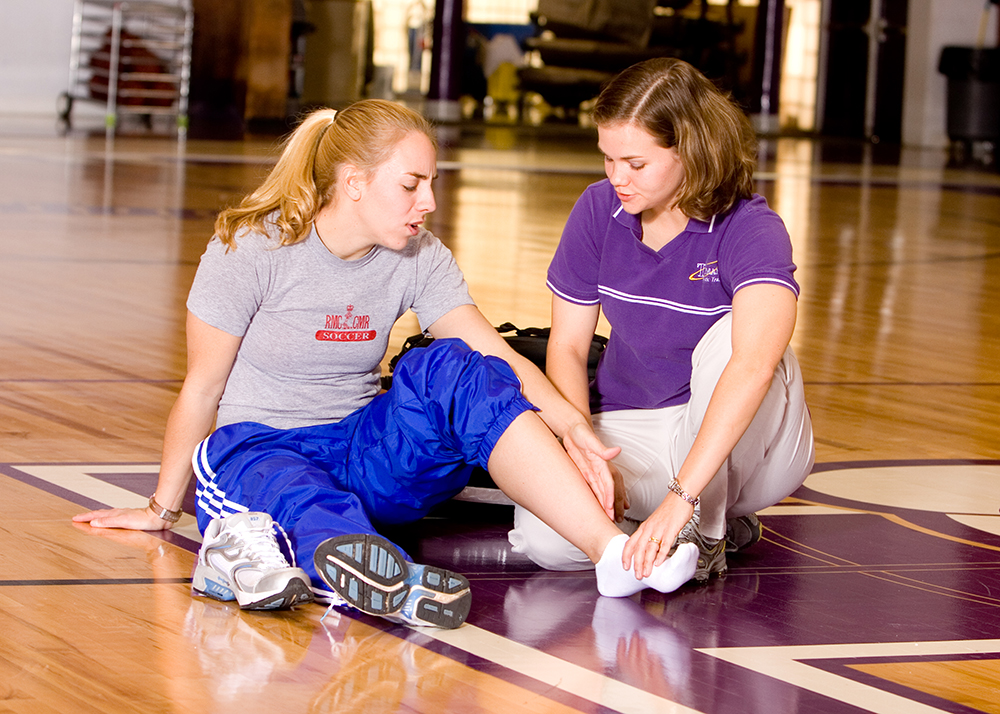Inside the Profession
Posted: June 5, 2014
The newly added section of the ATSU alumni newsletter, Inside the Profession, features the story of an AT working in their unique setting within the field of athletic training. This edition’s story highlights ATSU alumnus Candace Leach, in her duties as an athletic trainer working in the occupational health setting.
Occupational Health: Reaching New Heights
Leveling the playing field
By Karen Scott
Athletic trainers (AT) are often characterized as standing on the sidelines, anticipating injury or preparing sports athletes for intense, high-stake games and competitions. There is a new set of athletes, though, not characterized by cleats and padding or prods to the abdomen, but who take on physically challenging duties in the industrial workplace.
Often called industrial athletes, these employees call the occupational setting their playing field.
Companies like The Boeing Company, who have strong emphasis on safety in the industrial setting, have enlisted onsite healthcare providers – like athletic trainers – to boost health and wellness and decrease the number of work-related injuries.
ATs have the potential to offer musculoskeletal injury prevention, rehabilitation, and treatment services, enabling companies to maintain productivity while promoting a safe and healthy environment to employees who make up these settings.
Investing in an AT
According to a survey employed by the National Athletic Trainers’ Association (NATA), 31 of 32 company respondents reported the severity of employee injuries decreased by at least 25 percent due to the presence of an AT.
Investing in an AT also means curbing costs associated with work-related injury. One hundred percent of surveyed companies reported that certified ATs provide a positive return on investment.
NATA reports that for each $1 invested in preventive care, employers gain up to a $7 return on investment.
 Candace Leach, a board-certified and licensed AT, holds a master of science degree from A.T. Still University and is currently an employee of Work-Fit, who provides services to Boeing’s Industrial Athlete program.
Candace Leach, a board-certified and licensed AT, holds a master of science degree from A.T. Still University and is currently an employee of Work-Fit, who provides services to Boeing’s Industrial Athlete program.
“I had the opportunity to work as a high school athletic trainer,” Leach says. “However, I decided to focus a career working on my patient’s long-term health objectives versus with athletes whose priority was to ‘play in tomorrow’s game.’”
The Boeing Industrial Athlete program focuses on improving the physical resilience of employees in physically demanding jobs. Services include job conditioning programs, early intervention care for symptoms of musculoskeletal injuries, deep tissue intervention, work-site evaluations, body mechanics training, pre-work warm-up programs, and other educational activities.
On average, Leach interacts with more than 30 Boeing employees a week.
“The employees I see are assembly bench mechanics, maintenance employees, and all types of engineers,” she says. “My function ranges from relaying specific instruction for reported pain, to proactive interventions and presentations through injury prevention classes.”
Leach also collaborates with exercise physiologists, licensed massage therapists, on-site health coaches, ergonomists, safety administrators, disability resource managers, and industrial hygienists so that employees receive optional health and wellness interventions.
“I have found that employees in industrial environments may deal with pain from chronic injuries until they absolutely can’t function any longer,” Leach says. “With a larger focus on injury prevention and catching dysfunctions early, employees can minimize injury, work time loss, and improve their quality of life outside of work.”
A growing need
Techs and mechanics represent only a portion of patients that come through Leach’s doors. She has seen managers and even executives from different areas of leadership.
Work-Fit provides companies with injury prevention services, wellness programming, fitness, and on-site rehabilitation and hires healthcare professionals, like Leach, to provide those services.
Andrew Wetzel, West Coast vice president of operations at Work-Fit, projects the athletic training field will steadily grow among the occupational setting.
“Growth for ATs in the occupational setting has seen more significant growth in the past 10 years, and I expect continued growth in the future,” reports Wetzel.
According to NATA, there are currently 40,000 practicing ATs in the United States. The U.S. Bureau of Labor Statistics supports Wetzel’s projection in estimating that there will be a 30 percent increase in the number of athletic training jobs by 2020.
Services offered by ATs in the occupational setting are multi-faceted, but preserving the health and well-being of the industrial athlete are at the crux of their mission.
“I have had a few employees who completely changed their lifestyles to improve their personal health and quality of life,” Leach says. “There is a trust and understanding that has been established. Employees know that they can come to me and that my goal is to improve their quality of life in and outside of work.”
